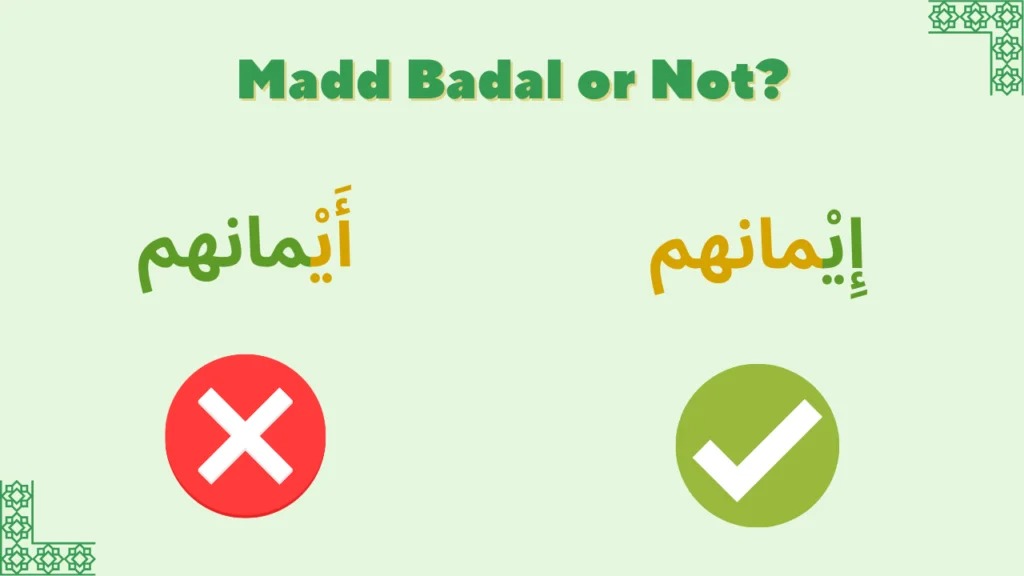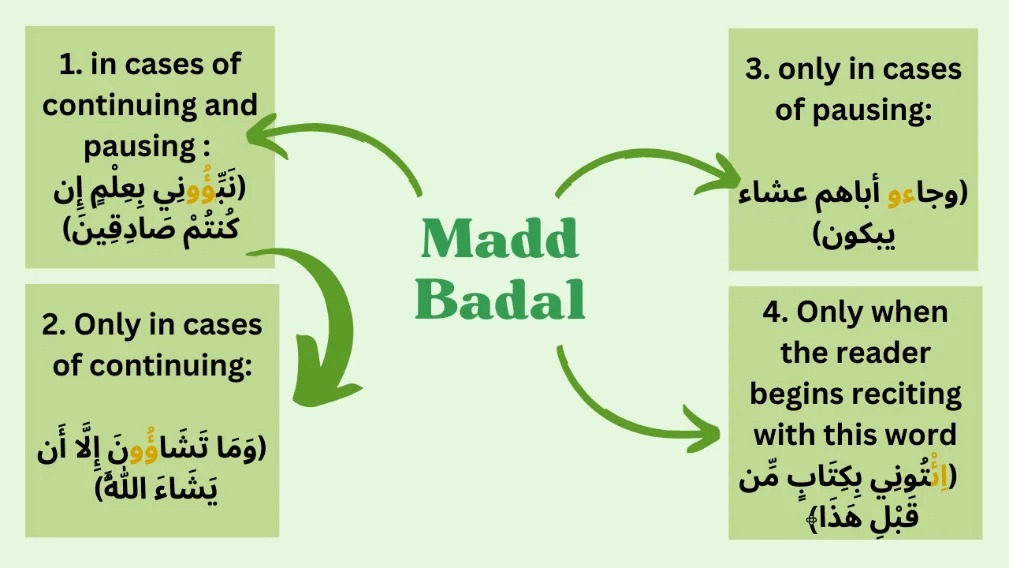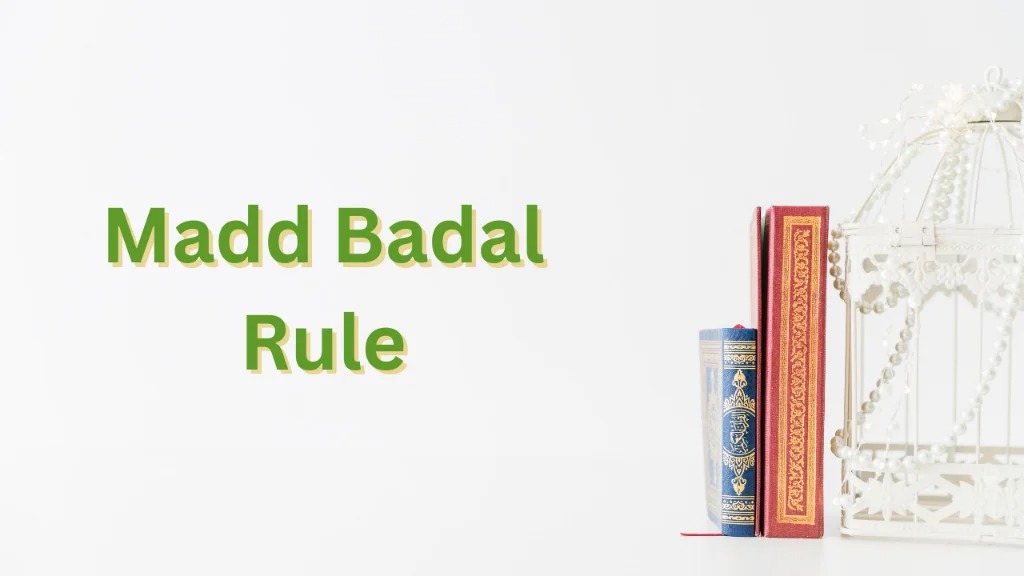Are you interested in learning the art of Madd Badal in Arabic calligraphy? Madd Badal is a fundamental component of the Arabic script and plays a crucial role in creating beautiful and balanced calligraphic compositions. In this article on the Arabian Tongue website, we will guide you through the process of mastering Madd Badal easily. Whether you are a beginner or already have some experience in calligraphy, these tips and techniques will help you enhance your skills and create impressive Arabic calligraphy pieces.
Definition of Madd Badal
Madd Badal, also known as “Substitution Elongation” in English, refers to the elongation or substitution of certain letters or syllables in Arabic poetry. These modifications contribute to the rhythmic structure of the poem, allowing for a harmonious flow and an aesthetically pleasing composition.
Historical Context
The origins of Madd Badal can be traced back to the ancient Arabian Peninsula, where oral traditions and poetry played a significant role in the cultural fabric. Poets would often employ various literary techniques, including Madd Badal, to captivate their audience and leave a lasting impression.
Key Features of Madd Badal

Madd Badal exhibits several key features that make it distinct within Arabic poetry. It introduces elongation or substitution in specific positions within words or syllables, emphasizing certain sounds and creating a melodious cadence. By incorporating Madd Badal, poets enhance the poetic meter and maintain the overall rhythm of their compositions.
Application in Poetry
Madd Badal finds extensive application in Arabic poetry, enabling poets to convey their emotions and narratives with precision and elegance. Through the manipulation of sounds and syllables, poets can evoke different moods, intensify imagery, and create a memorable experience for the audience. The strategic use of Madd Badal enhances the overall aesthetic appeal of a poem.
Types of Madd Badal
Madd Badal can be classified into three main types of madd badal: Ibtida’i Madd Badal, Wusta Madd Badal, and Sani Madd Badal.
Ibtida’i Madd Badal
Ibtida’i Madd Badal refers to the elongation or substitution of letters or syllables at the beginning of a word or a line. This type of Madd Badal sets the rhythmic tone for the poem and establishes a captivating opening.
Wusta Madd Badal
Wusta Madd Badal involves the elongation or substitution of letters or syllables in the middle of a word or a line. This type of Madd Badal adds variation and intrigue to the poem, creating a harmonious balance between the different sections.
Sani Madd Badal
Sani Madd Badal occurs when letters or syllables are elongated or substituted at the end of a word or a line. This type of Madd Badal creates a satisfying conclusion to the poetic phrase or verse, leaving a lingering impact on the reader or listener.
Examples of Madd Badal in Arabic Poetry

To truly grasp the essence of Madd Badal, let us explore a few examples from classical Arabic poetry:
- “قَدْ طَلَعَتْ مِنْ شَرْقِ الْعَلاَمِ” This line showcases Ibtida’i Madd Badal, as the elongation of the letter “قَ” (Qaf) at the beginning adds a melodic touch to the verse.
- “قَالَتْ لَهُ حَسْبِيَ” In this instance, Wusta Madd Badal is evident, as the elongation of the letter “سْ” (Seen) in the middle of the phrase creates a rhythmic variation.
- “حَتَّىٰ إِذَا جَاءَ أَحَدَهُمُ الْمَوْتُ” This line demonstrates Sani Madd Badal, as the elongation of the letter “تُ” (Taa) at the end contributes to the musicality and closure of the verse.
Understanding Madd Badal
Madd Badal is represented by a horizontal line placed above a letter, indicating a prolonged vowel sound. It is commonly found in Arabic scripts, such as Naskh and Thuluth, and adds a unique aesthetic to the overall composition. By mastering Madd Badal, calligraphers can create balance, harmony, and visual interest in their work.
Tools and Materials Required
Before diving into the practice of Madd Badal, it’s essential to gather the necessary tools and materials. Here’s a list of items you’ll need:
- Calligraphy pen or reed pen
- Ink or paint suitable for calligraphy
- The smooth and high-quality paper
- Ruler or straight edge
- Pencil for sketching guidelines
Having the right tools will contribute to better control and precision in your calligraphy practice.
Read More: Learning Quran With Tajweed Online
Step-by-Step Guide to Mastering Madd Badal
Warm-Up Exercises
Begin your calligraphy session with some warm-up exercises to loosen your hand and prepare for the intricate strokes. Simple exercises such as drawing circles, figure eights, and diagonal lines will help improve your penmanship and enhance your control over the writing instrument.
Practicing Basic Strokes
Before diving into Madd Badal, it’s crucial to practice and perfect the basic strokes of Arabic calligraphy. Familiarize yourself with the different components of each letter, including the vertical, horizontal, and curved strokes. Practice these strokes repeatedly to build muscle memory and develop a consistent and fluid writing style.
Combining Strokes to Form Madd Badal
Once you are comfortable with the basic strokes, you can start combining them to form Madd Badal. The Madd Badal mark is a horizontal line placed above a letter. Practice drawing the mark in various lengths, focusing on maintaining consistency and precision.
Understanding Length and Placement
To create visually appealing compositions, it’s crucial to understand the proper length and placement of Madd Badal. Different letters require different lengths of Madd Badal, and understanding these variations will help you achieve balance and harmony in your calligraphy. Study the work of accomplished calligraphers to observe how they use Madd Badal effectively.
Achieving Consistency and Balance
Consistency and balance are vital aspects of Arabic calligraphy. As you practice Madd Badal, pay attention to the uniformity of your strokes and ensure they flow seamlessly across the page. Consistency in stroke width, spacing, and placement will elevate the overall quality of your work.
Adding Style and Flourishes
Once you have mastered the basics of Madd Badal, you can begin experimenting with different styles and adding flourishes to your compositions. Explore various calligraphic styles, such as Diwani or Riqa, and incorporate decorative elements to make your work unique and visually captivating.
Common Mistakes to Avoid
During your journey to master Madd Badal, it’s important to be aware of common mistakes and pitfalls. Avoiding these mistakes will help you progress faster and create more polished calligraphy. Some common errors to watch out for include inconsistent line widths, improper placement of Madd Badal, and neglecting the principles of balance and harmony.
Recommended Read: Arabic Language Kids Course
Tips for Improvement and Practice

Improving your Madd Badal skills requires consistent practice and dedication. Here are some tips to enhance your learning experience:
- Set aside regular practice sessions to develop muscle memory.
- Experiment with different pens and inks to find the ones that suit your style.
- Study the works of renowned calligraphers and seek inspiration from their techniques.
- Join calligraphy communities and attend workshops or classes to learn from experts in the field.
Seeking Inspiration and Learning from Masters
Inspiration can be found in the works of accomplished calligraphers. Explore the masterpieces of renowned calligraphers, such as Ibn Muqla, Ibn al-Bawwab, and Yakut al-Musta’simi. Analyze their compositions, observe their use of Madd Badal, and incorporate their techniques into your own reading practice.
Exploring Advanced Techniques
Once you have mastered the fundamentals of Madd Badal, you can delve into advanced techniques to further elevate your calligraphy skills. Experiment with different scripts, explore the use of colors, and challenge yourself with intricate compositions. Continual exploration and practice will unlock new possibilities and enable you to express your creativity through calligraphy.
FAQs
[sc_fs_multi_faq headline-0=”h2″ question-0=”How long does it take to master Madd Badal?” answer-0=”The time required to master Madd Badal varies for each individual. With consistent practice and dedication, you can see significant progress within a few months. ” image-0=”” headline-1=”h2″ question-1=”Can I practice Madd Badal without formal training?” answer-1=”Yes, you can practice Madd Badal without formal training. However, seeking guidance from experienced calligraphers or attending workshops can accelerate your learning process.” image-1=”” headline-2=”h2″ question-2=”Which calligraphy style is best for practicing Madd Badal?” answer-2=”Styles such as Naskh and Thuluth are commonly used for practicing Madd Badal due to their clear and well-defined letterforms.” image-2=”” headline-3=”h2″ question-3=”How can I make my Madd Badal compositions more unique?” answer-3=”To make your Madd Badal compositions stand out, experiment with different styles, incorporate decorative elements, and develop your personal artistic flair.” image-3=”” headline-4=”h2″ question-4=” Where can I find resources for learning Arabic calligraphy?” answer-4=”You can find resources for learning Arabic calligraphy online, including tutorials, books, and video courses. Additionally, local art centers or calligraphy associations may offer classes or workshops.” image-4=”” count=”5″ html=”true” css_class=””]
Conclusion
Mastering Madd Badal is a rewarding journey that requires patience, practice, and a passion for Arabic calligraphy. By understanding the principles and techniques behind this essential element, you can create visually stunning compositions that captivate the viewer. Remember to practice regularly, seek inspiration from master calligraphers, and explore advanced techniques to continually improve your skills.


